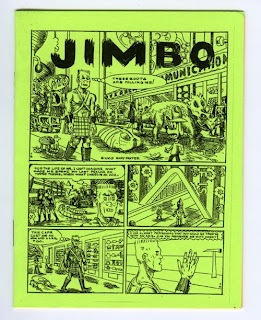Peanuts Lanterns
Red = Lucy
Orange = Snoopy
Yellow = Sally
Green = Charlie Brown
Blue = Linus
Indigo = Woodstock
Violet = Violet
Black Lantern Avatar = Shermy
Black Lantern Guardian = Miss Othmar
Lucy was a natural fit for red, as she is the character who is shown to be angry most of the time. I don't really think of Snoopy as being very greedy, but the gags about all of the treasures stored up in his dog house made him the character most associated with physical objects other than Linus, who I felt was a better fit as a Blue Lantern. I've always thought of Linus as a more optimistic version of Charlie Brown, maybe who Charlie Brown would have been had he had a source of security and constant companionship as Linus had with his blanket. There's hope in that idea, I think. Also, as the character who most often quotes scripture, Linus was a nice fit with the messianic overtones of the Blue Lantern Corp. A lot of the Sally gags seem based on her anxieties. I think Peppermint Patty is a better fit for Green, actually, but I had to get Charlie Brown in there somewhere. The trait I most associate with Woodstock is friendship, so he seemed like a good pick for the Indigo Lantern....also, his speech is portrayed as illegible dashes, similar to the alien speech of the Indigo Lanterns. The Violet thing was too obvious not to use. I like the idea of the Black Lantern Corp. consisting of the forgotten Peanuts characters from the early days of the strip who didn't quite work out, and one of the unseen adults as the mastermind behind the scenes.
The fun started here, I saw it first here.
Good Grief.
Orange = Snoopy
Yellow = Sally
Green = Charlie Brown
Blue = Linus
Indigo = Woodstock
Violet = Violet
Black Lantern Avatar = Shermy
Black Lantern Guardian = Miss Othmar
Lucy was a natural fit for red, as she is the character who is shown to be angry most of the time. I don't really think of Snoopy as being very greedy, but the gags about all of the treasures stored up in his dog house made him the character most associated with physical objects other than Linus, who I felt was a better fit as a Blue Lantern. I've always thought of Linus as a more optimistic version of Charlie Brown, maybe who Charlie Brown would have been had he had a source of security and constant companionship as Linus had with his blanket. There's hope in that idea, I think. Also, as the character who most often quotes scripture, Linus was a nice fit with the messianic overtones of the Blue Lantern Corp. A lot of the Sally gags seem based on her anxieties. I think Peppermint Patty is a better fit for Green, actually, but I had to get Charlie Brown in there somewhere. The trait I most associate with Woodstock is friendship, so he seemed like a good pick for the Indigo Lantern....also, his speech is portrayed as illegible dashes, similar to the alien speech of the Indigo Lanterns. The Violet thing was too obvious not to use. I like the idea of the Black Lantern Corp. consisting of the forgotten Peanuts characters from the early days of the strip who didn't quite work out, and one of the unseen adults as the mastermind behind the scenes.
The fun started here, I saw it first here.
Good Grief.




